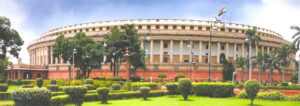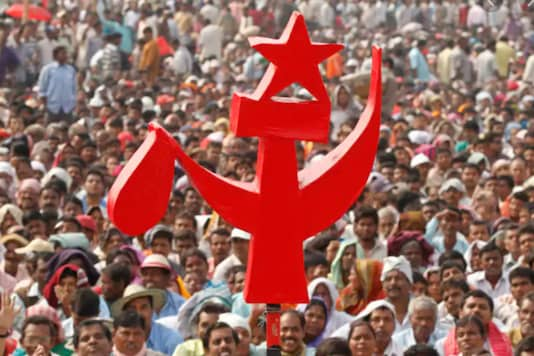
Surajit Das
The finance minister Shrimati Nirmala Sitharaman presented the union budget for the financial year 2023-24 in the parliament on 1st February. The budget has been placed in the context of high unemployment and lower income growth caused by the demand depression. Industrial stagnation is continuing for the last 10 years or so and it has been aggravated following the huge negative shock to the economy caused by the pandemic-induced lockdown. The lack of employment opportunities and loss of income at the aggregate level have resulted in lower purchasing power of the common people. As a result, the domestic aggregate demand has grown at a slower pace which has acted as an impediment to growth and employment generation. Lower aggregate demand for goods and services, in turn, has made the expected rate of profit lower, affecting the investors’ confidence. Consequently, the investment rate and the non-food credit offtake (from all the commercial banks taken together) have been falling as a proportion of the national income in India. As far as the external demand is concerned, the growth rate of export is also low because of the global recession and the widening current account deficit (i.e. the gap between import and export). The national income accounting happens by adding domestic private final consumption expenditure, private investment, investment by the public sector units (PSUs), government (revenue and capital) expenditure, and current account balance (i.e. export minus import). Therefore, government expenditure plays a key role in increasing the national income, particularly when consumption, investment, and trade surplus are low. An expansionary fiscal policy by increasing government expenditure as a proportion of GDP is suggested in this situation to boost the economy in order to ensure higher growth and employment. This is called the Keynesian demand management policy in the literature of economics. The increased government expenditure actually causes a larger increase in national income through the various rounds of the multiplier process, without necessarily causing demand-pull inflation, under a demand-constrained situation. In short, the aggregate government expenditure to GDP ratio has to increase in the current context in order to bring the economy out of the vicious cycle of lower aggregate demand, lower investment, lower employment and income of the people, and further depression of the aggregate demand for the commodities and services. However, in this union budget, the total expenditure has been reduced from 15.3% (2022-23 revised estimate) to 14.9% of GDP in the budget estimate for the year 2023-24. Therefore, this is a contractionary budget under the ongoing demand depression which is contradictory to the Keynesian policy prescription.
In the budget speech, the finance minister mentioned, “Capital investment outlay is being increased steeply for the third year in a row by 33% to Rs.10 lakh crore, which would be 3.3% of GDP. This substantial increase in recent years is central to the government’s efforts to enhance growth potential and job creation, crowd-in private investments, and provide a cushion against global headwinds”. The second significant announcement is “persons in the new tax regime, with income up to Rs. 7 lahks will not have to pay any tax”. These would surely have positive impacts on aggregate demand. However, less than 3% of people come under the direct tax bracket in India. Only around 10% of families have direct tax payee members in India. Hence, the rest 90% of families would not get any direct benefit from this tax rebate. More importantly, the capital expenditure has been increased at the cost of a substantial reduction in the revenue expenditure to GDP ratio by more than 1 percentage point (from the revised estimate of 12.7% of GDP in 2022-23 to 11.6% of GDP in 2023-24). As a result, the total expenditure to GDP ratio has actually fallen. Despite some expected increases in the revenue receipts to GDP ratio, the expenditure cut has been planned in order to reduce the revenue deficit and the fiscal deficit as proportions of GDP. This policy direction is prescribed by the neo-classical school of thought according to which a larger deficit would cause crowding-out of private investment and can reduce employment and output growth. However, in the present context, commercial banks in India are facing a low credit-deposit ratio because of the lower investment demand. Moreover, the crowding-out argument comes from the ‘treasury view’ or the fixed pool of saving view which is compatible only with full-employment or full-capacity situations. There is no reason to believe in the inevitability of crowding out because of the larger fiscal deficit in the context of an economy that is operating well below the full-employment or full-capacity level of output. Therefore, the underlying macroeconomic basis of this budget lacks relevance in the present Indian context. Moreover, an expansionary fiscal policy (by increasing the government expenditure to GDP ratio) may, in fact, generate higher growth and employment and larger revenue receipts for the government in the days to come.
A 33% (by Rs.30 thousand crores) reduction in the NREGS budget amidst the employment crisis is shocking. The food subsidy has been slashed by 31%, the fertilizer subsidy has been reduced by 22% and the subsidy on cooking gas has been cut down by 75% in this budget. The finance commission grants to the states have faced a huge reduction in the 2022-23 revised estimate as well as in the 2023-24 budget estimate (by Rs.42000 crore) as compared to the actual grants in 2021-22. Most of the human development-related spending in the social sector comes under the jurisdiction of the state governments. This cut would squeeze the fiscal space for the state governments for incurring expenditures according to their priorities. The agriculture budget as a proportion of GDP has also been reduced. As far as the revised estimate of 2022-23 on education and health of the union government is concerned, they are less by Rs.4400 crores and by Rs.9250 crores respectively than the budgeted figures for the same year. The poorer section of the population is more dependent on government education and health services. Moreover, the education and health expenditures (including central and state governments) to GDP ratio are the lowest as compared to all other major country groups around the globe. Instead of raising these expenditures substantially, these social sectors are facing cuts. All these have been done in order to reduce the revenue expenditure to cut down the revenue deficit (as % of GDP). However, the logic of so-called ‘sound finance’ (read balanced budget) does not necessarily lead to sound economics. The highest marginal tax rate would be slashed from 43% to 39% for the rich people (by less surcharge), however, the majority of the population would gain very little from this budget. The so-called ‘middle-class’ (which is actually the richest 10-15% population in India), who pays direct tax, maybe a little happy with this budget however, the conditions of the unemployed, the poor, and the vulnerable and of the farmers and the workers of this country are unlikely to improve through this budget. This budget is more influenced by the supply-side neo-classical school rather than the demand-side Keynesian school of thought under a demand depression. The increase in capital expenditure to GDP ratio is a welcome step to boost the economy however, the reduction in total expenditure as a proportion of GDP and particularly that in health, education, social sector, rural development, agriculture, subsidies (food, fertilizer, cooking gas), etc. are likely to have a negative impact on the economy and on the human development indicators in the country.
[Surajit Das is an assistant professor at the Centre for Economic Studies & Planning, Jawaharlal Nehru University, New Delhi. Views are personal.]


